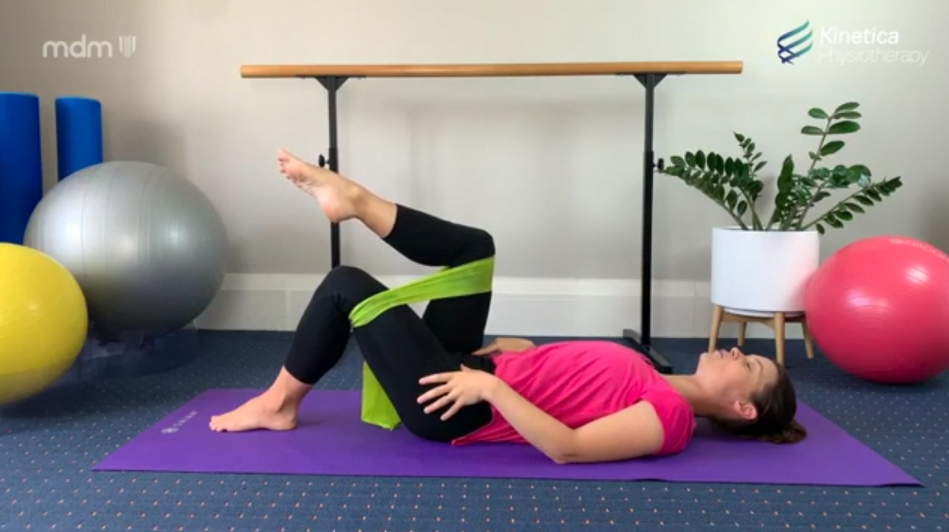Alright Sydney, we can do this.
Lockdown 3.0
As we plunge again into chaos and changed routines – what can we do differently this time? As physios we saw all types of isolation specific injuries – injuries and niggles that came as a direct consequence of adapting and changing our routines. We know the importance of routine and consistency and now want to share our learnings from last year!
As we enter another lockdown it’s a fitting time to think and change on the challenges and lessons from lockdowns past.
1. Growth, Change & Grit
Having been through previous lockdowns, the benefits of maintaining a positive mindset are clear affecting both yourself and those around you. If you can, use trusted friends and family as support. Be open to new experiences and use each experience as an opportunity to learn. Remember that each lockdown is temporary and although the time is not spent training in the same way as you usually do, the time spent is still beneficial to the pursuit of your goals.
2. Training requirements
Consider the most challenging or high impact skills in your training e.g., running, jumping, heavy weights. These will likely need to be modified at home. That may mean a reduction in repetitions, resistance or by replacing them with another exercise. For example, by replacing heavier weights with lighter ones and increasing repetitions or replacing jumping at dance on a sprung floor in dance shoes for skipping on grass in sneakers.

Running is not the same on all surfaces. Consider modifying your training load or changing footwear to increase support.
3. Running, jumping
If you cannot train in the same way because of specialised equipment i.e., lack of gym equipment or a specialised dance floor to absorb force, then training will need to accommodate this. Running on a treadmill is not the same as running on concrete and dancing on specialised flooring does not compare to dancing on carpet or home floorboards. Consider modifying your training load or changing footwear to increase support.
4. Home gym caution
Take care with returning to a home gym set up if you do not regularly train this way. Starting a new resistance program should always begin with low loads and high repetitions. When starting any new exercise that adds significant load/strain onto the body it is always wise to wait 48 hours before repeating it again or increasing the load.
With any change in exercise remember that pain with exercise is not normal and although muscle fatigue is normal – you should never push through pain.
5. Kick up your cross-training
Using lockdown as an opportunity to try new ways of cross training can be fun and a welcome change to routine. Try cycling, skipping or yoga to supplement your current training in alignment with your goals.
6. Adjusting your goals
This time will still be useful in achieving any goals you may have for your training; however, these may need to be adjusted or broken down when timelines change due to lockdowns. Deadlines generally increase so we have more time to achieve our goals. Modifications to training loads, frequency and type need to be considered in our revised goals. Breaking your goals into smaller components can be effective. Start small and adjust your goals as needed. Celebrate the little wins linked to achieving your goals to keep you motivated (and goal orientated).
7. Don’t delay treatment
Use lockdown to your advantage and get on top of any body niggles that just don’t feel quite right. A physiotherapist can provide you with a better understanding of what may be causing discomfort and equip you with exercises to strengthen any compensations. Telehealth and ZOOM appointments are available if you are unable to attend physical sessions due to isolation. Understanding and addressing longstanding imbalances and smaller pains can lead to a faster return to pain free activity or a full diagnosis sooner.
8. For reals …
Be realistic when setting your goals and whether a change in training will affect them. For example, dancing fulltime cannot be replicated under lockdown conditions so our goals will need to be adjusted under the limitations of our personal situation.
9. Returning with gusto
When returning to training post lockdown remember to gradually build up these complex/high impact skills to allow your body to accommodate and continue to progress safely.
Summary
So in summary:
- Be mindful of your exercise surface – use joggers, grass or the children’s playground
- Adapt, breathe & prevent
- Mind the gap – adjust into your return
- Strengthen & cross train
- Pay attention to those niggles
We hope that you learnt a lesson or two from our lessons from lockdown and we look forward to seeing you training again soon! – The Kinetica Physiotherapy Team
–
As an essential service Kinetica Physiotherapy remains open through the lockdown in accordance with government advice. Our strict infection control procedures continue, and we also offer telehealth session over telephone or zoom for clients who are unable to attend face to face sessions. Please call (02) 9948 6188 or email enquiries@kineticaphysio.com.au to arrange an appointment.

